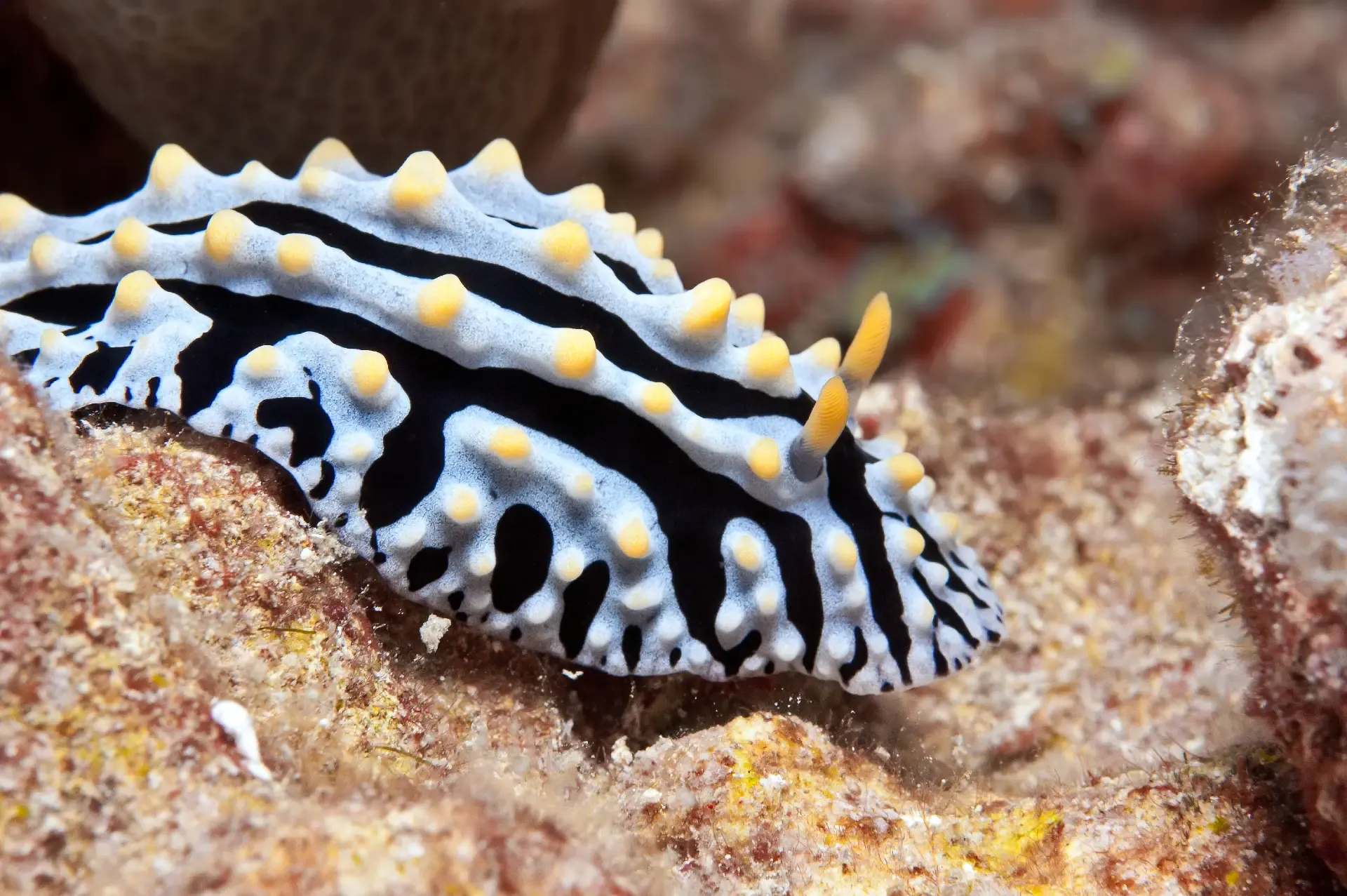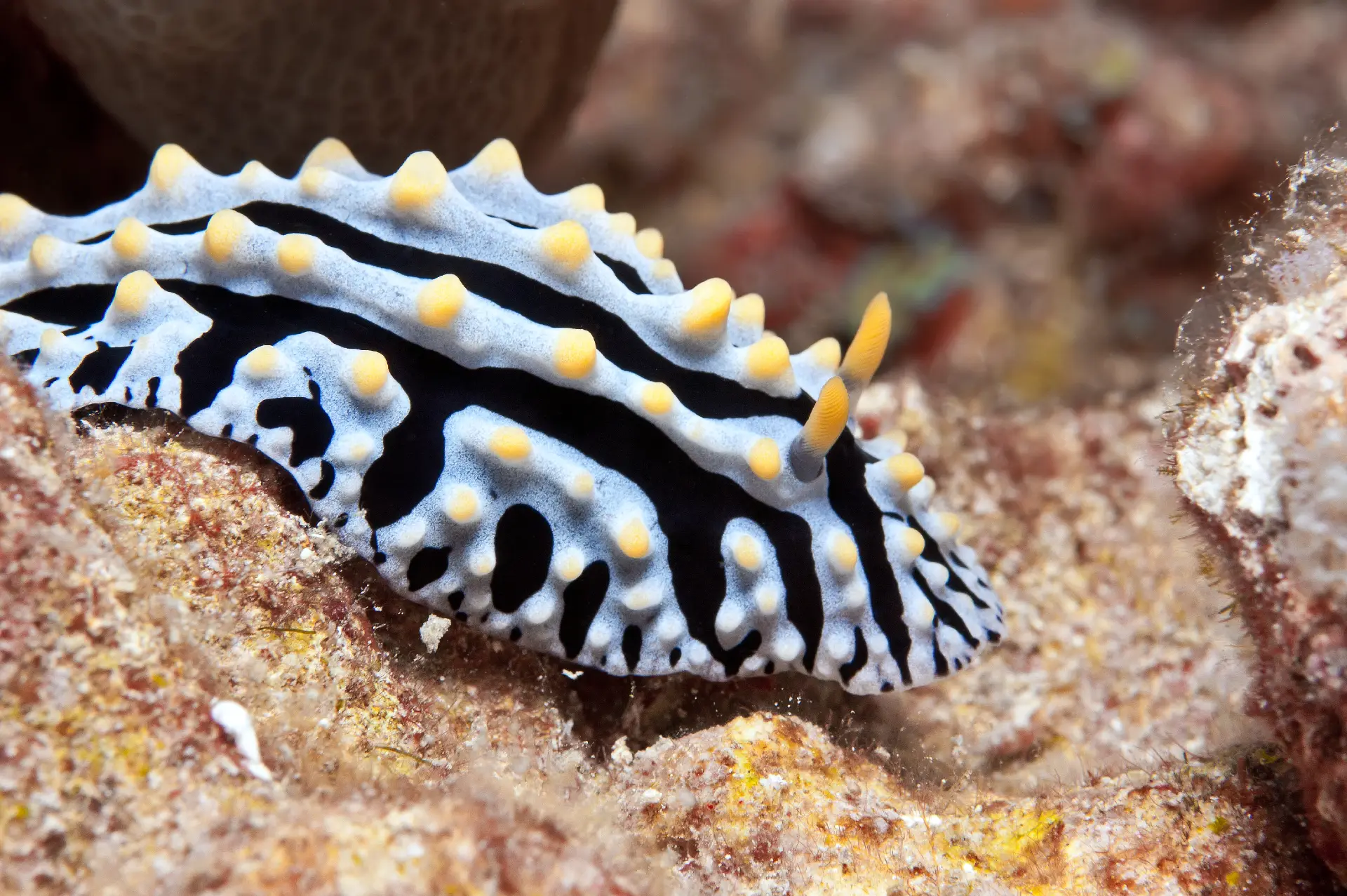Discovering Nudibranchs in Boracay: The Colorful Characters of the Reef
Discovering Nudibranchs in Boracay: The Colorful Characters of the Reef
When you think of Boracay, it’s easy to picture its stunning white sand beaches and crystal-clear waters. But for divers, there’s a whole other world to explore beneath the waves—one that’s just as vibrant and exciting. Among the many wonders of Boracay’s underwater realm are the tiny, colorful creatures known as nudibranchs. These sea slugs, often called the jewels of the sea, are a must-see for any diver exploring the area.
What Are Nudibranchs?
Nudibranchs are soft-bodied marine gastropods, and their name literally means “naked gills.” Unlike other mollusks, they don’t have a shell. What they lack in protection, they make up for in stunning colors and intricate patterns, making them one of the most sought-after subjects for underwater photographers. Each species of nudibranch is unique, with a dazzling array of shapes, sizes, and colors that serve both as camouflage and as a warning to predators that they might not be a tasty meal.
Boracay, with its rich coral reefs and diverse marine life, is home to several species of nudibranchs. Here are some of the fascinating nudibranchs you might encounter while diving in Boracay, along with their common names and why they’re called that.
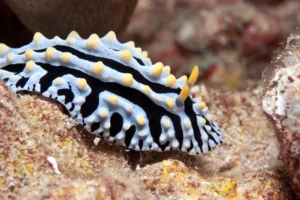 The Scrambled Egg Nudibranch (Phyllidia varicosa)
The Scrambled Egg Nudibranch (Phyllidia varicosa)
The Scrambled Egg Nudibranch is one of the most eye-catching nudibranchs you can find in Boracay. Its body is a mix of blue-grey with distinctive black lines running along its length, topped with bright yellow tubercles that resemble—you guessed it—scrambled eggs. This quirky name reflects the unique appearance of the yellow-tipped bumps on its back, which look like they could have come straight from the breakfast table. The Scrambled Egg Nudibranch is often found on or near sponges, which form a crucial part of its diet.
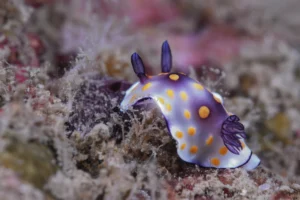 The Purple Nudibranch (Hypselodoris apolegma)
The Purple Nudibranch (Hypselodoris apolegma)
The Hypselodoris apolegma, commonly known as the Purple Nudibranch or Purple Hypselodoris. This species is well-known for its striking and vibrant coloration, featuring a deep purple or violet body with bright yellow or orange spots. The edges of the mantle are often a lighter shade of lavender or white, adding to its stunning appearance.
The Purple Nudibranch is a favorite among underwater photographers due to its vivid colors and the beautiful contrast it creates against the reef. It is commonly found in the Indo-Pacific region, including the waters around Boracay. This nudibranch often feeds on sponges, and its bold coloration serves as a warning to predators that it might be toxic or distasteful. If you’re diving in Boracay, keep an eye out for this magnificent little creature—it’s one of the true gems of the underwater world!
The Blue Dragon Nudibranch (Chromodoris annae)
The Blue Dragon Nudibranch is as mythical-looking as its name suggests. With a brilliant blue body accented by black stripes and yellow or orange edges, this nudibranch truly stands out against the coral backdrop. The name “Blue Dragon” comes from its vibrant blue coloration and its slightly dragon-like appearance when it moves through the water. It’s one of the more common species in the region and a favorite among divers for its striking beauty.
The Magnificent Chromodoris (Chromodoris magnifica)
The Magnificent Chromodoris lives up to its name with bold and beautiful coloring. This nudibranch is adorned with orange, black, and white stripes that make it one of the most visually striking sea slugs around. Its “magnificent” title is well-deserved, as its bright colors and elegant patterns make it a true showstopper on any dive.
Bullock’s Hypselodoris (Hypselodoris bullockii)
Bullock’s Hypselodoris is a bit more subtle in its beauty, but no less captivating. This nudibranch often comes in shades of pink, lavender, or purple, with white or yellow-tipped rhinophores and gills. While it might not have a flashy common name, its delicate colors and slender shape make it a standout. The common name honors the scientist who first described the species, adding a personal touch to its identity.
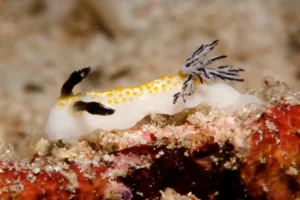 The Leopard Nudibranch (Risbecia tryoni)
The Leopard Nudibranch (Risbecia tryoni)
The Leopard Nudibranch is named for its spotted pattern, which resembles the coat of a leopard. This nudibranch has a pale body with brown spots outlined in purple, making it easy to spot (pun intended) against the coral. The Leopard Nudibranch is a beautiful example of how nature imitates some of the most iconic patterns found on land, bringing a touch of the wild into the underwater world.
The Variable Neon Slug (Nembrotha kubaryana)
The Variable Neon Slug is a dazzling nudibranch known for its vibrant, glowing colors. Typically dark green or black with bright orange or red markings, this nudibranch almost seems to have its own internal light source, making it look like it’s glowing underwater. The name “Neon Slug” perfectly captures its otherworldly appearance, which makes it a favorite among divers who love to spot unique and colorful marine life.
The Black-Margined Glossodoris (Glossodoris atromarginata)
The Black-Margined Glossodoris is named for the distinctive black edge that runs along the frilly margin of its body. This cream-colored nudibranch has a delicate, lacy appearance that’s both elegant and striking. The contrast between the pale body and the dark margin creates a beautiful, almost floral effect that’s a delight to discover on a dive.
The Pink Phyllidiella (Phyllidiella pustulosa)
The Pink Phyllidiella is another nudibranch that’s easy to spot due to its vibrant coloring. It’s typically darker in hue, with pinkish tubercles that dot its body. While it might not have as flashy a common name as some of the others, the Pink Nudibranch’s subtle beauty makes it a delightful find during a dive.
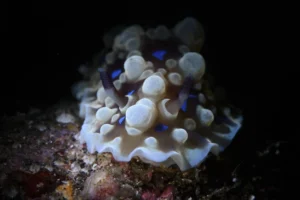 The Lacy Nudibranch (Halgerda batangas)
The Lacy Nudibranch (Halgerda batangas)
The Lacy Nudibranch is as delicate and intricate as its name suggests. With a translucent body adorned with orange-tipped tubercles and a network of lines that resemble lace, this nudibranch is a work of art. It’s often found on coral reefs, where its intricate patterns blend in with the surrounding environment. The name “Lacy Nudibranch” reflects both its delicate appearance and the intricate beauty of its natural design.
Exploring Nudibranchs with New Wave Divers
At New Wave Divers in Boracay, we love introducing our guests to the incredible diversity of marine life that calls our waters home. Nudibranchs are just one of the many highlights you can expect to encounter on a dive with us. Whether you’re a seasoned diver or a beginner, spotting these colorful sea slugs is always a thrill. Their unique patterns and vibrant colors make every dive a new adventure, full of discovery and wonder.
So, next time you’re diving in Boracay, keep an eye out for these fascinating creatures. With their bright colors and intricate designs, nudibranchs are a reminder of the beauty and diversity that thrives beneath the waves. Happy diving!
